Butternut squash is a fantastic addition to any garden, especially for those who want to try their hand at growing something other than the traditional summer squashes like zucchini, yellow squash, and patty pan (scallop squash). This somewhat gourd-shaped squash with a sweet, nutty taste is a good source of fiber, potassium, iron, niacin, beta carotene, and complex carbohydrates. In recent years, it has grown in popularity, not only for its taste but also for its versatility.

Some may find it odd that butternut squash, which is planted in the spring and harvested in the early fall, is not considered a summer squash. Instead, it is classified as a winter squash because it stores well and thus, can be enjoyed throughout the winter months. Acorn squash, spaghetti squash, and delicata squash are also winter squashes.
This article contains affiliate links. If you make a purchase using one of these links, I will receive a very small commission at no additional cost to you, and it will help me maintain this website. Rest assured, I only recommend products I actually like!
When to Plant Butternut Squash
Butternut squash is sensitive to cold weather, so it is important to plant it after the danger of frost has passed and the soil is at least 60 to 65o F (15-18o C). Plant seeds ½ to 1 inch (1.3 to 2.5 cm) deep in a good potting mix. Seeds will sprout in about ten days.
Depending on the variety, it will take between 80 and 140 days for the squash to mature. So, if you have a short growing season, you may need to start seeds indoors under a grow light and a heat mat about six weeks before the last frost. Of course, you can also do this if you just want to get a head start. Once the danger of frost has passed, you can harden off (acclimate) the seedlings to the outdoors.
Container Size
Choose a container that is made from a material that is suitable for growing food. A five-gallon, BPA-free, food-grade bucket with drainage holes or a fabric grow bag will work for smaller, bush-type plants. But it may be advisable to plant in a 10-to-15-gallon container for larger vining varieties.
It will help to place a trellis next to the container, especially if growing a vining variety. As the plant matures, it will need to be supported by the trellis. You can use twine if needed to help fasten the plant onto the structure. As the squash grows and increases in size, it will also increase in weight. To help support the squash, use strips of pantyhose or an old tee shirt to fashion a hammock to cradle it.
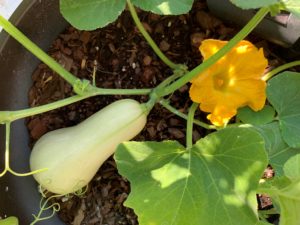
Sun and Soil
Plant in rich, well-draining soil, preferably with a slightly acidic soil pH of 5.8 to 6.5. If you are unsure of your soil’s acidity, you can perform a simple test using a pH test kit.
Butternut squash requires a minimum of six and preferably eight hours of full sun.
Water and Fertilizer
Like other members of the cucurbit family, butternut squash has a high demand for water. You will need to keep the soil moist, but not soggy. When the soil feels dry an inch or two below the surface, water well, taking care not to get the leaves wet as it will promote fungus.
Butternut squash is also a heavy feeder, meaning that you will need to fertilize it regularly. A fertilizer that is higher in phosphorus than it is in nitrogen is best. This is the liquid fertilizer that I generally use. It has an NPK (nitrogen, phosphorus, potassium) of 2-4-2. And this is the granular fertilizer that I generally use. It has an NPK of 4-6-3. You can learn more about NPK in this helpful article.
Male and Female Flowers
Butternut squash, like other squashes, requires pollination. Each plant will produce male and female flowers. The male flowers will appear days, if not a few weeks before the female flowers do, and they will be more numerous. You can easily differentiate the female flower from the male flower because the ovary, which looks like a miniature squash, will be located under the blossom. (If female flowers fail to appear, you can read this helpful article to find out why.)
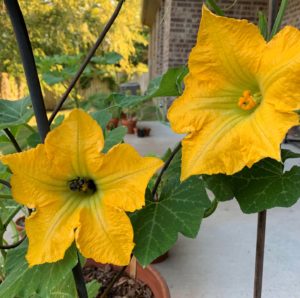
If your area lacks a sufficient number of bees and other pollinators, you may need to hand pollinate the blossoms. Simply take a cutip or small soft-bristled brush and cover it with pollen from the stamen of the male flower. Transfer the pollen to the female flower’s stigma. Each male flower usually has enough pollen for several female flowers. If pollination is successful, the ovary or miniature squash will begin to develop. If not, it will wither and die.
Since both the male and female flowers stay open for only one day, it is best to hand pollinate in the morning when both flowers are wide open.
Pests
Unfortunately, some insects love butternut squash as much as you do! Squash bugs, cucumber beetles, and the squash vine borer are the primary culprits. Aphids, flea beetles, whiteflies, and cutworms love all kinds of plants, and butternut squash is no exception. Follow the links to learn how to identify and organically deal with these pests.
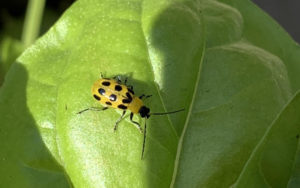
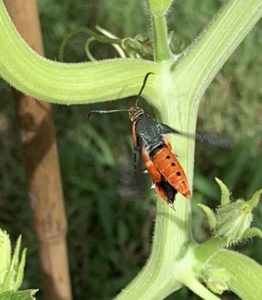
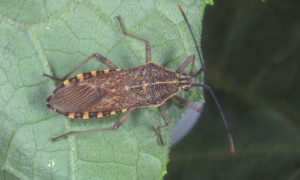
Diseases
Powdery mildew is a very common fungus that afflicts all kinds of squashes. You can learn how to effectively treat this plant disease in this article. Downy mildew is another fungus-like disease that can afflict butternut squash. You can learn more about it here. Also, check out this article to learn how to tell the difference between powdery mildew and downy mildew.

Bacteria wilt, which is spread when there is a particular bacterium in the feces of cucumber beetle, will cause the plant to wilt, seemingly overnight. The leaves closest to the infected area will wilt first, then spread to the remainder of the plant. There is no treatment or cure for this disease other than to eliminate cucumber beetles. You will need to pull the plant and place it in the trash. Do not compost it.
Blossom end rot, often associated with tomatoes, can also be a problem in butternut squash. Brown spots near the blossom end of the fruit will start out small but grow as the fruit matures. Blossom end rot is a result of inconsistent watering. To prevent this condition, try to keep the soil evenly moist but not soggy. You may need to add mulch to help retain water. In addition, do not use fertilizers with high nitrogen as too much nitrogen will prevent the plant from absorbing calcium. You can add calcium to the soil if blossom end rot has already occurred. But again, the key to preventing it is proper watering.
When to Harvest
Depending on the variety, butternut squash is ready to harvest about 85 to140 days after planting. The stem should be pale green to brown, and the beige rind (skin) should not have any visible green. Also, it should be dull and not shiny. The last but most important test it needs to pass before being harvested is that the rind will not easily dent when pressed with your thumbnail. Harvest the squash using pruning shears or a sharp knife. Be sure to leave about two to three inches of stem on the squash.
Resist the temptation to harvest the squash before it is ready as it will negatively affect the taste, and the flesh will be too firm. An exception to this would be if your area is going to experience a frost, in which case any squash that is close to being ripe should be picked. Otherwise, any portion of the squash that is damaged by the frost will eventually spoil. Alternatively, you can try covering the plant with a row cover or frost blanket to try to buy extra time on the vine for the fruit to ripen.
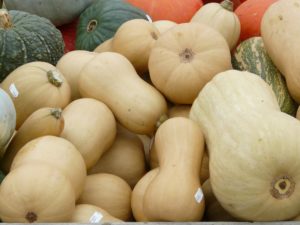
How to Cure and Store
To maximize the sugar content, and therefore the flavor, harvested butternut squash needs to be cured before it is eaten. Place the squash in a room that is 80 to 85°F (27-29°C) with high humidity for about 7 to 14 days with good ventilation. Lay the squash in a single layer, not touching one another.
Once cured, store the squash in a cool, dry place that has good ventilation and is about 50-60o F (10-15o C.) It should last for 3 to 6 months in these conditions.
Varieties
There are quite a few varieties of butternut squash to choose from. Here are some of the more popular ones for container gardening:
Waltham Butternut is the most common variety of butternut squash that is grown. It is a vining type, but it is also well suited for container gardens. Squash is ready to harvest in about 85 to 90 days, and it stores very well.
Honeynut Squash is a semi-vining type that produces miniature butternut squash that measures between 4 and 5 inches (10 to 12 cm) in length. It is perfect for containers and said to be resistant to powdery mildew. It takes about 100 days to reach maturity.
Autumn Glow is a fast-maturing butternut squash that is ready to harvest in as little as 80-85 days. It is a compact variety that grows well in containers. The fruit measures about 8 inches long and stores well.
Butter Boy Hybrid is a vining type that is ready to harvest in about 80 days. It grows to a height of about two to three feet, making it suitable for containers. But you will need a sturdy trellis because the squash weighs about two to three pounds each.
Burpee Butterbush is an heirloom variety that is compact and perfect for container gardening.
Growing butternut squash is a rewarding crop that you can enjoy during the winter months. If you have never grown it before, give it a try!
Thank you for reading this article! If you found it helpful, please consider sharing it with others via email and social media!
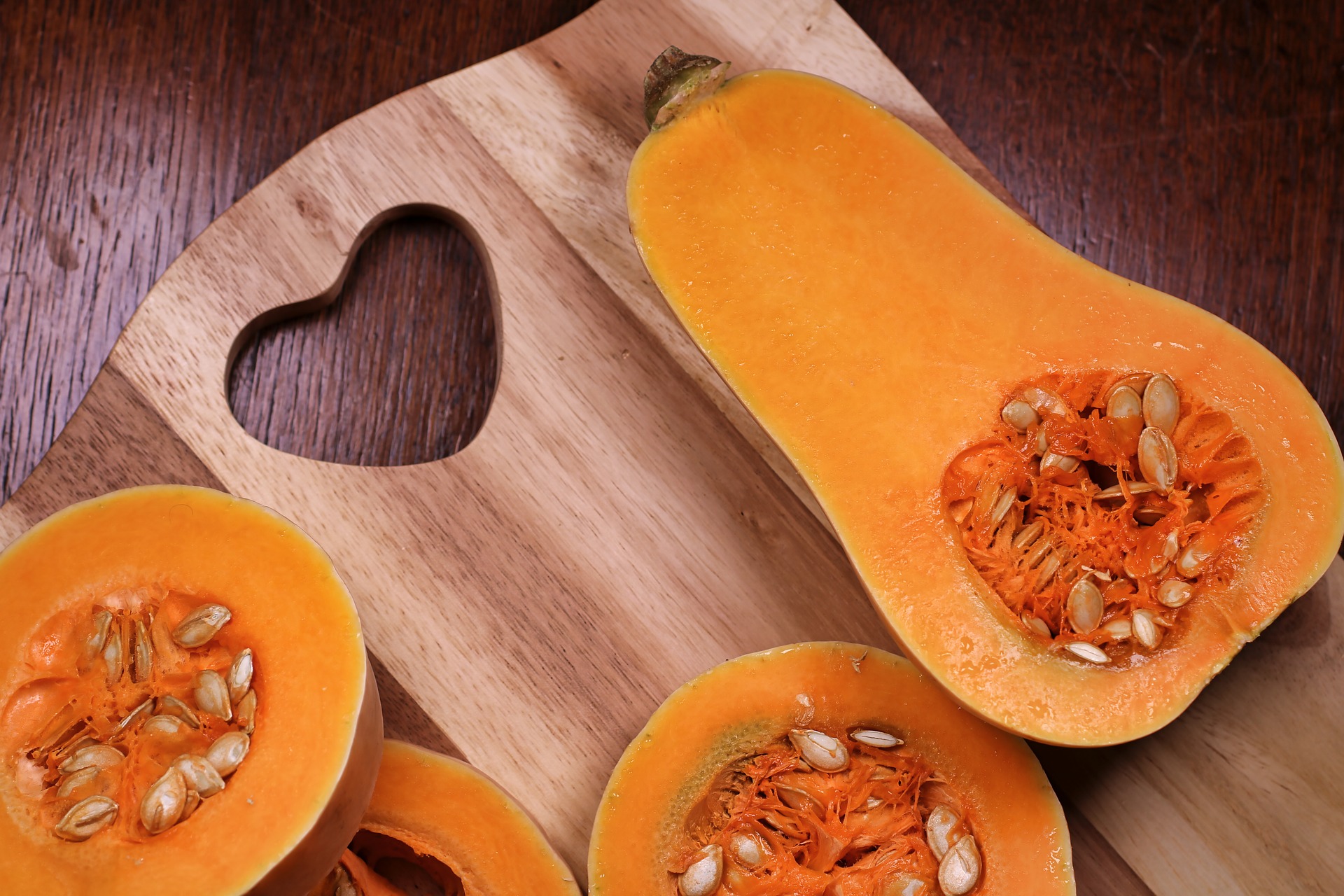

I watered my butternut squash in a container today and rust colored water came out. It was all wilted so thought it needed water. What is going on?
Hi Eric,
Discolored water draining from container plants could be due to the water passing through organic material such as peat moss, naturally decomposing plant matter/compost, or possibly from the container itself. It is a natural occurance in my potted plants.
But just overnight it has died there are three butternut squash on it but it’s very heavy and dying. I was only watering it every 3 days it’s been in the upper 80’s it’s is the strong thing I’ve seen. Healthy one day and dead the next.
So sorry to hear theplant died. That must be disappointing. If it died overnight, it could be due to a fungal disease like fusarium wilt or an insect like the squash vine borer. Hope you can find some answers.
Best wishes!